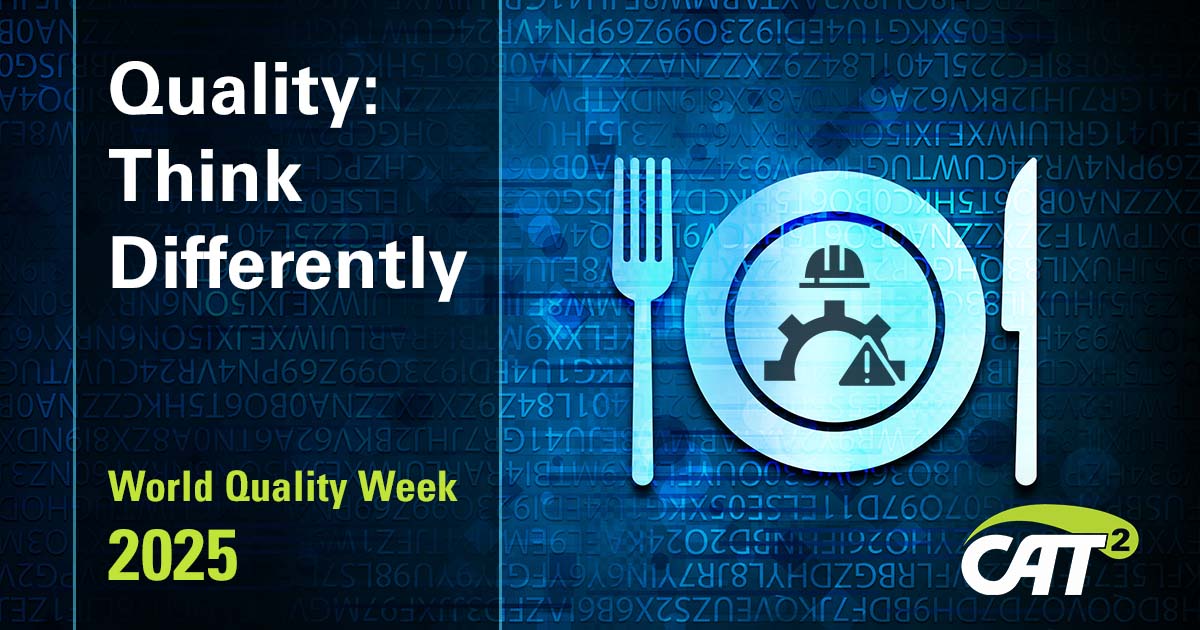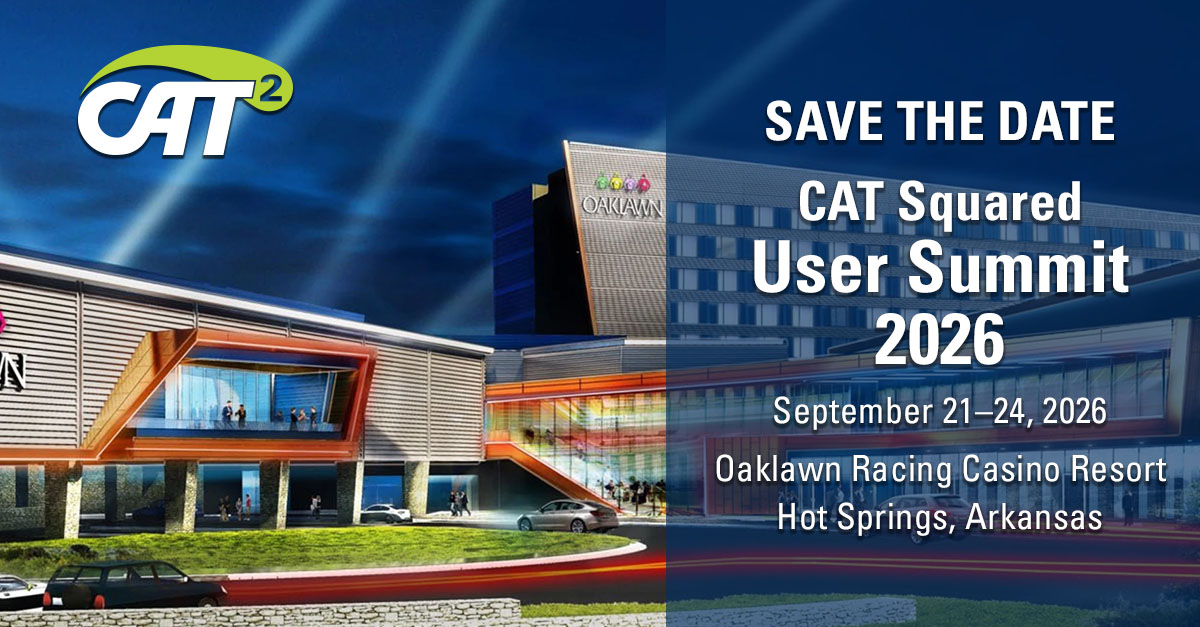This World Quality Week 2025, we’re embracing the theme “Quality: Think Differently.” In food manufacturing, that means reimagining quality not as a reactive function managed by QA, but as a living culture owned by everyone—from operators to executives.
For decades, many plants have relied on after-the-fact inspections to catch problems once they’ve already occurred. But the future of food safety and quality depends on real-time visibility, empowered teams, and a shared sense of responsibility on the production floor.
As Frank Yiannas—food safety culture expert and former FDA Deputy Commissioner—has said, “The goal of the food safety professional should be to create a food safety culture, not a food safety program.” This article explores how leading manufacturers are doing just that: using real-time monitoring and production ownership to think differently about quality and build resilient, high-performing operations.
Building a Food Safety Culture on the Factory Floor
Establishing the right culture is foundational to any quality initiative. As a former Walmart VP of Food Safety, Yiannas asserted that a strong food safety culture is “a prerequisite for an effective food safety management system.” In other words, safety and quality shouldn’t be just boxes to check; they must be ingrained in how every employee thinks and acts.
Drawing from decades of experience at Disney, Walmart, and the FDA, Yiannas observed that even the best-written procedures and rules are “useless” if people don’t follow them in practice. What truly matters is day-to-day behavior: “It’s what we do — our behaviors — that matters most. In fact, that’s why I like to say that, simply put, food safety equals behavior.”
Companies with a positive food safety culture have employees at all levels who consistently “walk the talk,” doing the right thing for food safety even when no one is watching. As Yiannas notes, major food safety failures usually trace back to organizational culture problems, not just technical issues: “What do [investigators] conclude [after a crisis]? ... The underlying root cause is almost always the organization’s culture.”
The takeaway is clear: making safe, high-quality food starts with people and values. When leadership makes food safety a core value (not just a changing priority) and employees feel personally responsible for the products they handle, the entire operation becomes more proactive in preventing issues. This cultural groundwork enables the next steps – like new technology or processes – to be far more effective in maintaining quality.
Real-Time Monitoring: From Reactive to Proactive Quality Control
Modern food manufacturing is increasingly embracing real-time data and automation to catch problems early. The FDA’s New Era of Smarter Food Safety initiative, for example, emphasizes leveraging digital technologies to create a more transparent, responsive food system.
Academic research supports this shift: advancements in Industry 4.0 technology – such as IoT sensors, AI analytics, and cyber-physical systems – facilitate real-time monitoring and optimization of production processes. These tools enhance resource allocation, reduce waste, and improve product quality. In essence, smart factories can continuously monitor critical quality parameters rather than relying on periodic or end-point checks.
Digital tools like sensors, AI, and analytics enable real-time visibility into food production, allowing issues to be detected and corrected immediately.
Real-time quality monitoring means conditions such as temperature, humidity, pH, or sanitizer levels are tracked live on the line, with instant alerts if something goes out of spec. This approach enables immediate intervention—preventing a minor deviation from snowballing into a major quality failure or safety hazard.
For example, a 2025 review on AI in food processing noted that integrating advanced sensors and AI for continuous monitoring has “improved food safety, minimized spoilage, [and] enhanced consumer trust” in products. Instead of discovering a temperature deviation or contamination hours later during a manual check, connected systems can flag it in real time.
The benefits go beyond safety compliance—they also improve efficiency. With instant data, manufacturers can correct process drift on the fly and reduce waste (e.g., preventing a batch from being ruined). The system essentially acts as an ever-vigilant digital quality inspector, shifting companies from a reactive stance (fixing problems after the fact) to a proactive one.
Of course, adopting such technology can be challenging—it requires investment and data management—but the trend is clear: food manufacturers are moving toward more connected, data-driven quality assurance.
Production-Led Quality: Empowering Workers with Ownership
Technology alone isn’t a silver bullet; the human element remains crucial. Many factories have traditionally separated the Production and Quality Assurance (QA) functions – sometimes leading to conflicts. It’s not uncommon to see “tension between the QA department, focused on safety and quality, and the Production department, focused on meeting production targets.” One side fears that extra quality checks will slow throughput, while the other fears that rushing production will compromise standards.
The solution is to break down these silos by instilling quality ownership on the production floor.
Lean manufacturing practices offer a strong example. Toyota’s famous andon cord system literally puts the power in operators’ hands: “It places quality ownership directly with assembly line employees.” Any worker can pull the cord to stop the line at the first sign of a defect, prompting immediate problem-solving. Rather than relying solely on QA inspectors to catch issues at the end, frontline operators are empowered (and expected) to take action the moment something seems wrong. This approach creates a shared responsibility for quality and fosters a mindset that “we don’t pass defects downstream.”
In Toyota’s case, the andon system has long been credited with improving product consistency and reducing rework by addressing root causes in real time.
The broader concept here is quality ownership. Researchers define it as “an employee’s sense of belonging to the quality of [their] work” – in other words, each person feeling responsible for ensuring their output meets standards. When operators have that sense of ownership, they “act independently to ensure that quality is essential” in every task.
A recent case study in a manufacturing setting showed the impact of cultivating this mindset. The company’s management believed high defect rates were due to workers’ lack of ownership, so they implemented continuous improvement training to engage employees in quality. Over time, as quality ownership increased, defect rates dropped significantly—the plant’s quality index nearly reached its target after previously being well above acceptable limits. Researchers concluded: “improved quality control ... is influenced by increasing human resources’ quality ownership.”
In short, when people closest to the process take charge of quality, performance measurably improves.
This production-led approach doesn’t eliminate the need for QA, but it changes the role. QA staff become enablers and coaches rather than sole gatekeepers. Quality becomes built into the process, with operators performing on-line checks, stopping for issues, and driving continuous improvement.
Cross-functional collaboration is key. For example, if a QA manager and production supervisor disagree on a new safety procedure, they need to find common ground rather than working at cross purposes. Strong leadership and training align goals and eliminate the “us vs. them” mentality between departments.
When done right, everyone—from management to line workers—shares the same ultimate goal: to make safe, high-quality food and do it right the first time. This alignment of values defines a mature food safety culture.
Thinking Differently About Quality Starts with Culture, Data, and People
This World Quality Week, we’re reminded that quality isn’t a department—it’s a culture. True excellence comes when everyone, from the line operator to the CEO, understands that production owns quality and QA assures it.
At CAT Squared, our Food Safety & Quality Management (FSQM) solutions are designed to help manufacturers think differently about quality—by connecting real-time data, empowering frontline teams, and enabling a proactive approach that prevents problems before they start.
If you’re ready to move beyond traditional inspection-based models and build a smarter, data-driven quality culture, now is the time to think differently.




